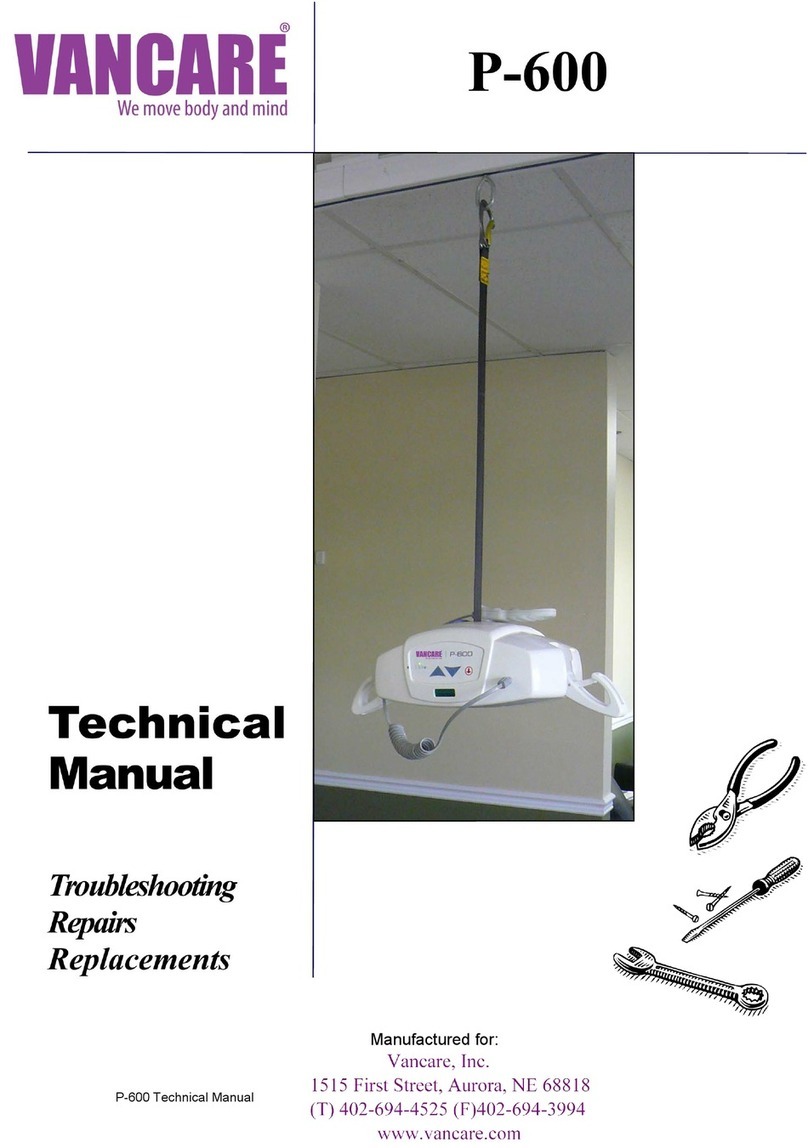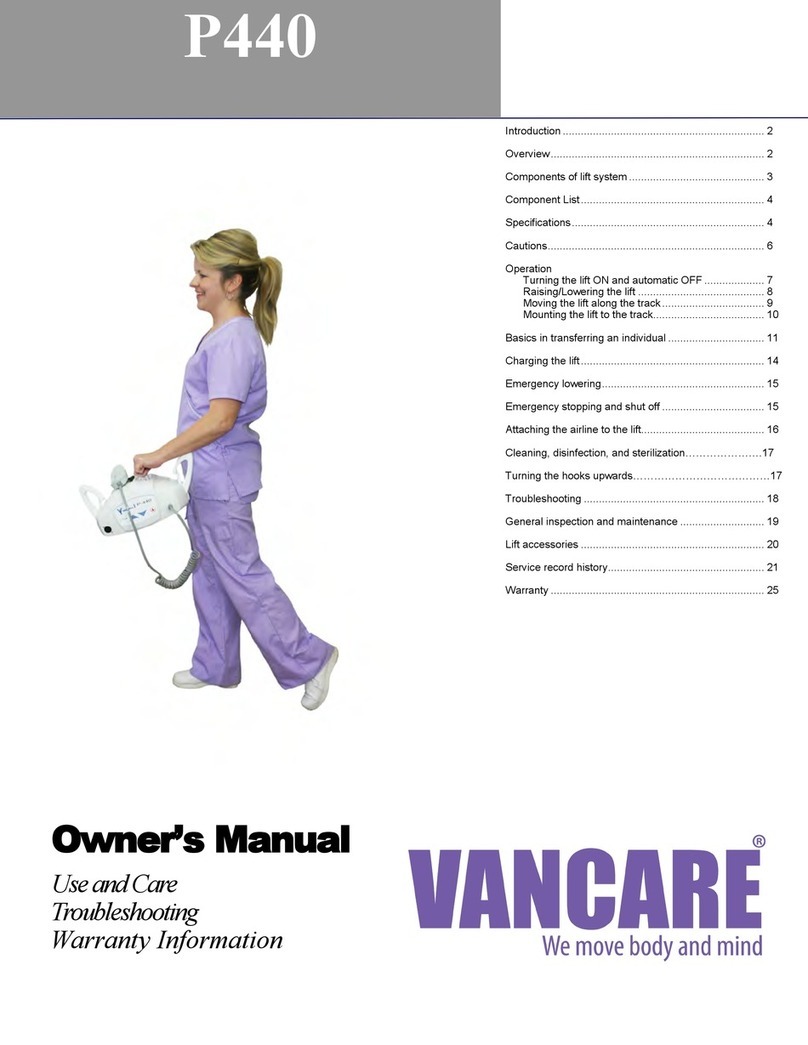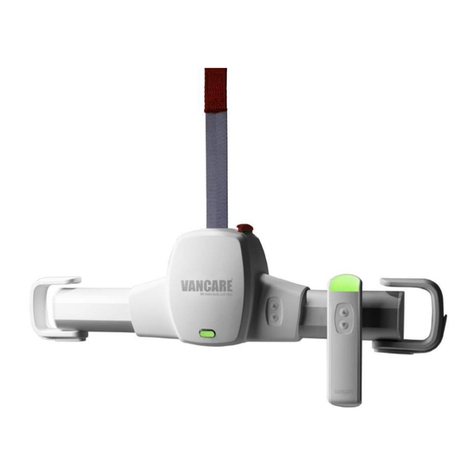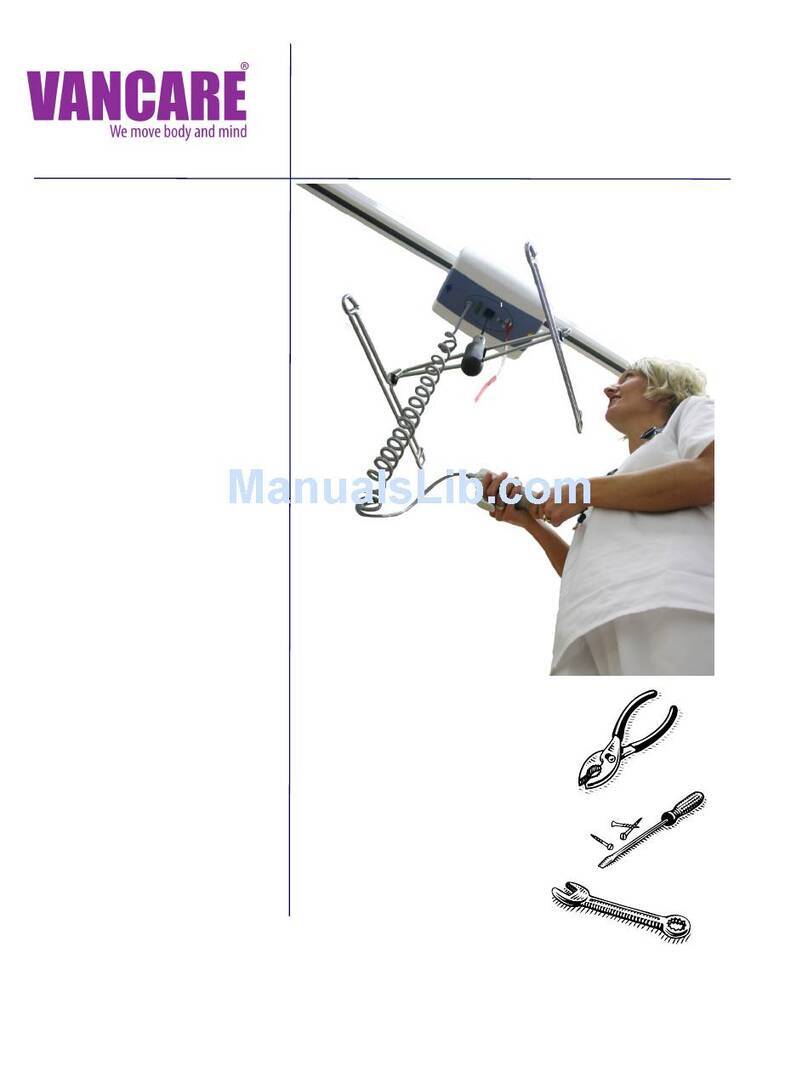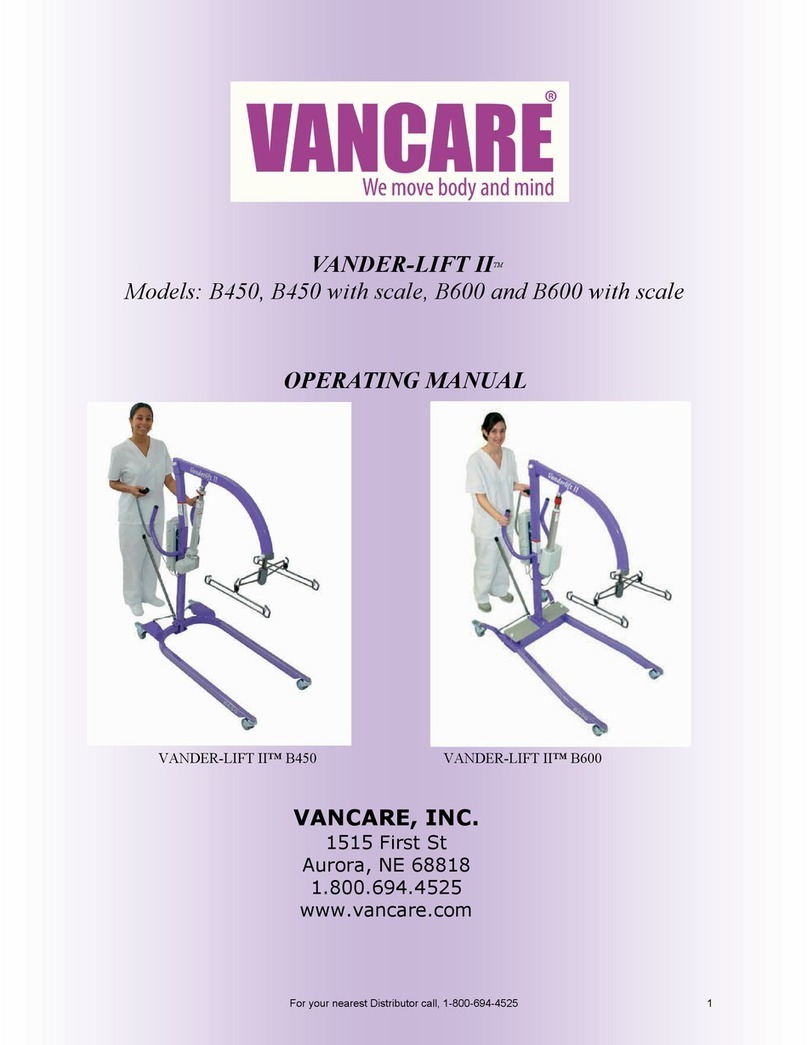
www.amico.com 5
Safety Instructions
!READ THESE INSTRUCTIONS CAREFULLY OR SERIOUS INJURY MAY OCCUR
•The Vancare G-Series Lift must be installed only by personnel authorized by Vancare.
•Do not use this equipment prior to understanding the contents of this manual.
•Contents of this manual are subject to change without prior notice to users. Keep for future reference.
•Never place the Vancare G-Series Lift, track/PLP and sling(s) in control of a person who has not been properly
trained in the use and care of this equipment.
•The Vancare G-Series Lift and associated Track/PLP and sling(s) are for transferring patients only. Never use the
G-Series Lift for any other purpose.
•Vancare Mobility’s Warranty is void if unauthorized personnel perform service on the Vancare G-Series Lift system.
•In facilities where more than one caregiver is be responsible for using the Vancare G-Series Lift and associated
track and slings, it is important that all caregivers be trained in the proper use of this equipment. A training
program should be established by the facility to familiarize new caregivers with this equipment.
•Do not expose the Vancare G-Series Lift directly to water. Warranty does not cover any misuse or abuse
of the Vancare G-Series Lift.
•The Vancare G-Series Lift should be inspected and maintained on a regular basis to keep it operating
safely and correctly. Refer to page 16 of this manual.
•Any accessories used with the Vancare G-Series Lift including the track/PLP and sling(s) should be checked to
ensure that they are in good working order. Check for signs of wear or fraying prior to use. Report any unusual
wear or damage immediately.
•Vancare Mobility will not be responsible for any damage caused by misuse, neglect or purposeful destruction of
the lift and its associated components. Do not attempt to modify/alter the Vancare G-Series Lift.
•Do not in any circumstance exceed the maximum allowable load of this lift. Refer to the “Technical
Specifications” section of this manual and/or the labels on the lift.
•The installation of the lift, track and sling are certified to a maximum load. Do not exceed the maximum rated
load of any of the components.
•There is a risk of explosion if the lift is used in the presence of flammable anesthetics.
•The Vancare G-Series Lift should be decommissioned/disposed of after the recommended service lift in
accordance with local law regulations.
There are no known contraindications associated with the use of the Vancare G-Series Lift
and its accessories, provided they are used per our recommendations and guidelines.
However, for any independent uses of the Vancare G-Series Lift, it is extremely important that the patient is able
to receive assistance, during the transfer in the event of an equipment failure. This assistance can be provided in
the form of; a nearby qualified caregiver, a phone or other communication device.












